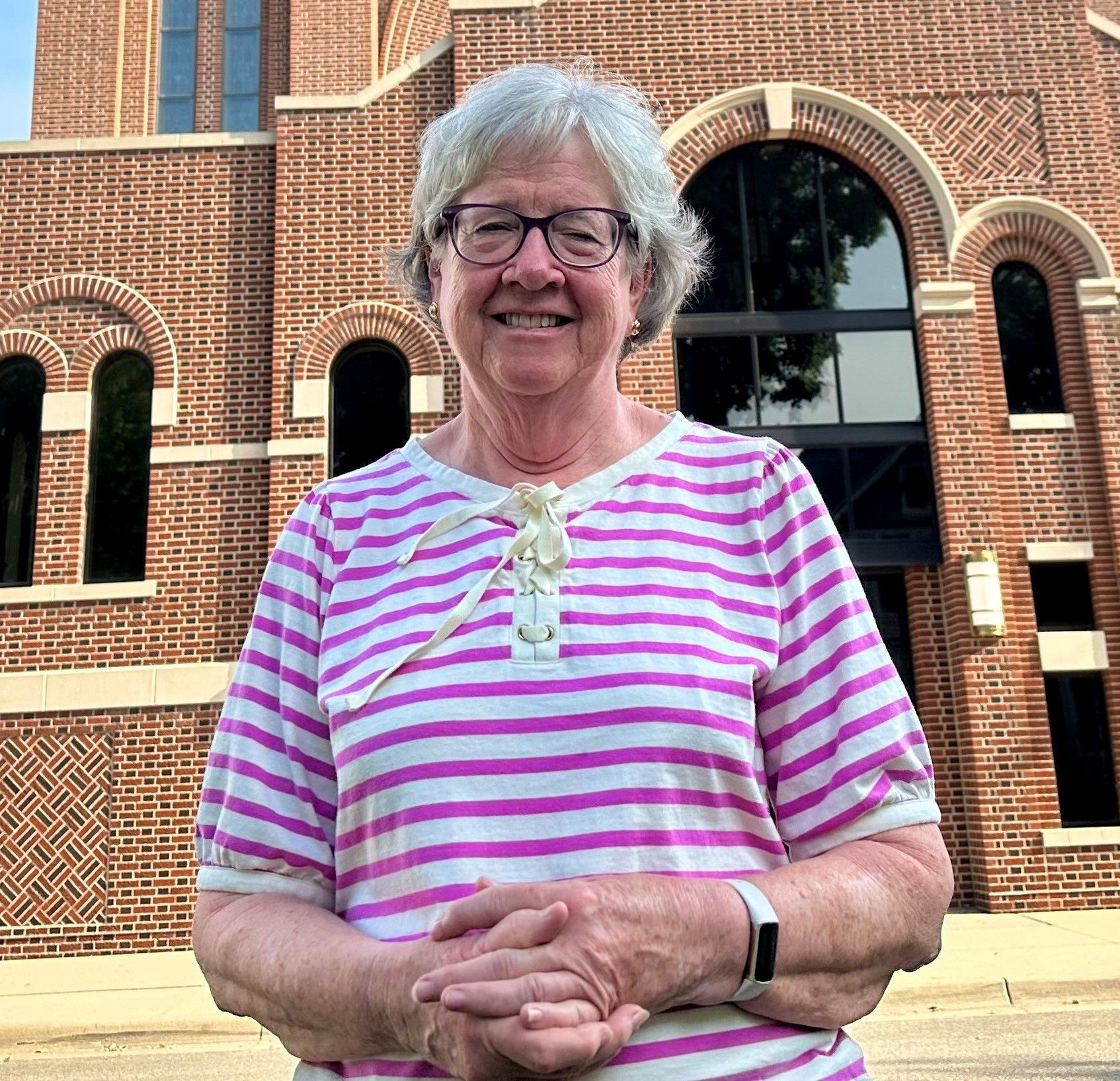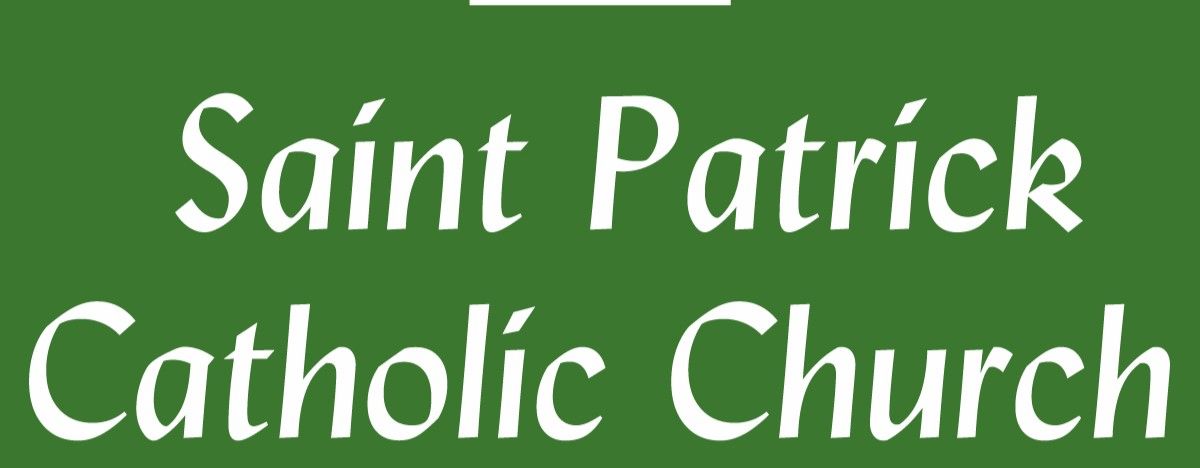Youth ministry in the 1990s inspired leaders for next generation
Diane Flaherty, who has filled in for the past year (2023-24 school year) as interim youth ministry director, was never afraid to try out new ideas. It was an encore for Diane, who had worked as the full-time youth ministry director at St. Patrick for a decade from 1991 to 1999.
It was February 1991 when St. Patrick’s pastor, Fr. Funke, stopped Diane Flaherty after Mass one Sunday. She and her husband had just moved to Cedar Falls from Illinois a few months earlier. “He said, ‘I know you used to be a youth minister in Illinois,” Diane recalled. “I was thinking, how in the world would he know that? And then I realized that his brother was in my home parish back in Illinois.”
Below are some reflections from Diane about youth ministry in the 1990s:

'Why can’t we do that here?'
After settling into the full-time position for a couple of years, Diane helped to launch a small-group and large-group youth program, with the small groups meeting at parents’ homes and the large group meeting in the basement.
“I read about that someplace and I thought, why can’t we do that here? I had known a couple of parishioners who I thought I could get to do that (in their homes) and I would make up the lessons. So that’s how we started that,” she said. “We had a group of about six different adults. I would write the lessons and we would meet a week before the lessons to go over them. And then I did a large group with two or three more adults.
Confirmation classes were held separately, and teens were confirmed in their junior year. “If you can find God in your junior year, you can find Him anytime in your life, because life is just so chaotic,” she said. “They appreciated that when they came to confirmation, it was just a time to decompress and to feel God’s presence.”
Building a sense of community among the kids was important, particularly because they came from five different high schools. “One of my favorite stories was the time that it was prom or homecoming and one of the girls didn’t have a date. So, three of the guys took her. It was just things like that where they would help each other out. They used to go to each other’s football and basketball games.”
In 1999 Diane accepted a full-time position with the Archdiocese of Dubuque as director of youth and young adult ministry, which she held for six years. Two parishioners, Nancy Meyer and Joyce Staebell, took over the youth ministry program at the parish. Diane maintained an office at St. Patrick as well as at the archdiocese during her time there.
Verbalizing their faith
“We had such a (good) team here that I drew heavily from those people,” she said. One of those ideas, which she brought with her from her experience in her parish in Illinois, was a parish retreat team that included the parish youth. They began in 1993 by having her former group from the Quad Cities come to St. Patrick to lead the retreat, and then the St. Patrick youth began to lead retreats around the state. The retreat team was open to juniors who had been through the confirmation retreat themselves.
“That group said that experience alone really carried them, because they had to verbalize what their faith was to other people – and they had to live it. Like, if you’re not going to church, you’re not going to be doing this stuff.”
While that retreat program has since died out, but it’s something that Diane hopes will be resurrected by St. Patrick.
Several St. Patrick parishioners who participated in the youth ministry programs as teens during the 1990s have returned as parents to serve as youth ministers or small-group leaders. “That’s why I think we’ve been so successful this year is that all of these ‘kids’ came back because they wanted their kids and younger kids to get what they got out of it.”
Q&A
What are other elements of a successful youth ministry program?
It was primary for me to have the adults that were working with the teens to use those kids’ names. They had to literally say their name, right? Whenever someone comes in a room, you have to say that person’s name, because that establishes a relationship. Even if you have to ask their name six times – that is primary.
And (the adult leaders) must be able to speak about their own faith experience – when they are asked. Too often, adults want to talk and they don’t want to ask questions, and all you have to do with kids is ask questions. If they’re interested, they’ll ask you again (about your own faith journey. I want them to feel like this is their parish, not their parents’ parish. If we spend enough time and have enough experiences that are primary to them, then it becomes their church.
Did the renovations of the youth center make a big difference for the programs?
We used to have this eclectic group of couches that people didn’t want anymore. I remember one time, Laura Farmer, Mary Farmer’s daughter, was sitting on one of them and she put her hands between the cushions and she pulled out a bottle of gin (left by) a homeless guy who would come and stay periodically.
In 1999, Jim Mudd came to me and said, “I want to do something for the kids … I want to tear this part down and start over” I said, that’s great. I was thinking of something like a coat of paint or something, right? He said, “No, I mean I really want to do something for the kids I want to do something big …. I don’t want the kids to be left out.”
And so they gutted the whole inside of the Youth Center, brought in somebody to do the design, and also brought in all matching chairs and they refinished the gym floor. … So, it did make a difference a little in programming, but it really showed them that that somebody cared about them and that they are important.
What’s a favorite youth program memory that would you have some photos of?
One thing that was really cool -- the deacon would carry in that big cross we have (for Stations of the Cross during Lent), and then once the stations were done, the cross would ‘surf’ across the people (as everyone guided it horizontally from the rear of the church back to the altar, saying ‘You can pass the cross to us.). It was pretty moving. I had read about this in a magazine article. You’ve got to think big. I think that’s what scared most priests I worked with. They’d always say, “Diane, please, no surprises.” Oh, I can’t guarantee that, but it will be tastefully done.
###

